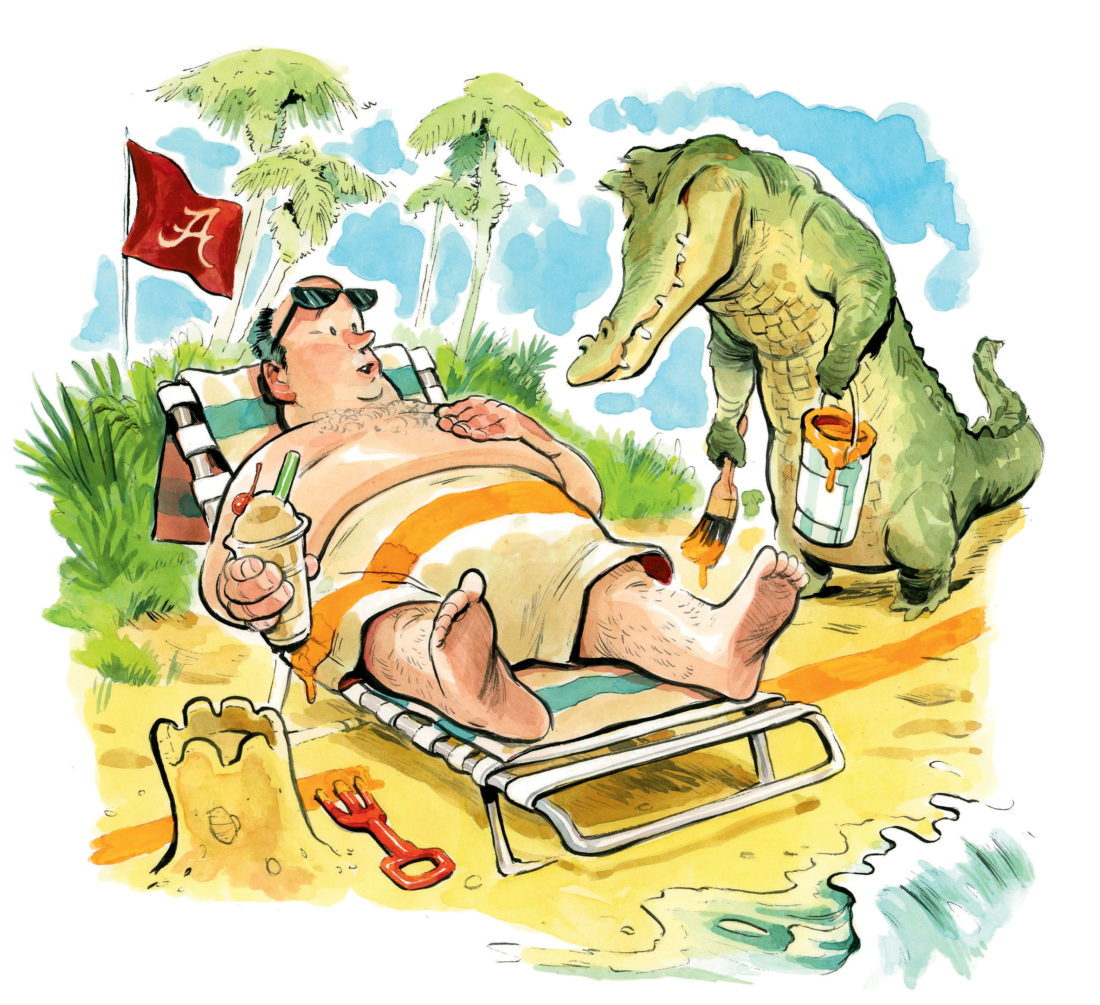Q: Hey, why doesn’t the Panhandle belong to Alabama? Florida stole it, right?
Not outright, but it was a shady grab. Now we mainly know Floridians as a strange folk who cannot be stopped from paving a swamp and then trying to sell that as workable realty. Not so this juicy parcel. The Panhandle—roughly, the territory between the Perdido and the Apalachicola Rivers—featured as the pigskin in a game of eighteenth-century political football when Florida moved from Spanish to British control in 1763. What the latter called West Florida became a haven for English-speaking settlers, some of whom migrated down from what became Alabama. The Panhandle reverted to Spain after the Revolutionary War. Enter international bad boy Napoleon Bonaparte. To gin up cash for his wars, he off-loaded the Louisiana Territory onto Thomas Jefferson in 1803, leaving Spanish Florida surrounded by a nascent America. The United States then squeezed the peninsula from Spain, grandfathering in the old British West Florida borders to include the Panhandle. Dutifully, the Alabama-settler Panhandle citizenry petitioned at least seven times between 1811 and 1901 to be reassigned to Montgomery. The Alabama legislature made multiple offers to buy the section. No go. The moral of the saga? The beachcomber mentality is tricky. Although Floridians will definitely sell you piles of Pacific coral, thong bathing suits, taxidermy mounts of crocodile heads, “Hawaiian” shirts made in Vietnam, and giant polyethylene pool floats painted up like gators, when it comes to something they really want, they hang on to it.
Q: Can it be that our best sheets, shirts, and table linens no longer come from Southern cotton?
Kudos for dressing a fine table, but the choicest cotton is global and always has been. What you’re asking about is the extra-long-staple cotton from the prized Gossypium barbadense, as opposed to Gossypium hirsutum, called “upland” cotton, which is what primarily grows in the South, though both were bedrock crops of slavery. The oldest samples of barbadense are from Ecuador and Peru, and have been carbon-dated back 7,800 years. It travels under many names, among them pima, Egyptian, and Sea Island—the boll weevil wiped out production of the last one—but it’s all extra-long-staple cotton, so named for its resilient fibers. The species requires a two-hundred-plus-day season and accounts for around 5 percent of the world’s cotton, of which the United States still produces the lion’s share. That’s because American botanist David Fairchild ran out to Egypt circa 1900 and picked up some cultivars, which led to strains developed for farmers in the arid Southwest—thus “pima,” a nod to the Pima tribe at Arizona’s Gila River reservation. The South’s only region with the climate to grow that is West Texas, but California’s San Joaquin Valley has outstripped Texas in production. Gossypium barbadense also grows in Uzbekistan, Tajikistan, Sudan, and China. If you’re talking stratospheric thread counts and $500 bedsheets, most likely they’re from California or Egypt.
Q: Gettin’ a mite rusty on wing shooting. Any tips?
Racking up a goose egg at your first few good quail rises, or thinking you bagged a canvasback when it was actually your partner in the blind, means you should chip off the rust before getting out among them. The SEC’s football teams are the best in the nation, but they still hold practice, right? We all know we have to swing that parabola of shot through the bird. The game is to coordinate range, speed, and direction of flight, and to match that with your swing. You can replace your afternoon golf round with potting away at the local sporting clays course, or bathe in the healing waters of instruction at a shooting school. But there’s a sneaky backyard-loner tip I got at a dove shoot (at which I was missing a ton of birds) from an old friend. As when you were a kid, take any automatic shotgun and a tin can to an empty field. Scoot the can along and up off the ground with successive shots, trying to hit it again and again before it stops. Reload, repeat. To mangle soccer-speak, it’s Hacky Sack with a shotgun. Like any soccer drill, it’ll keep you on your toes.








